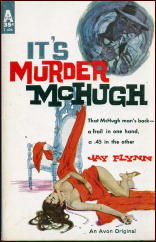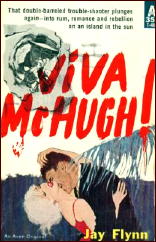Reviewed by DAVID VINEYARD:
A KING WITHOUT DISTRACTION. Gaumont, France, 1963. Original title: Un roi sans divertissement. Claude Girard, Colette Renard, Charles Vanel, Pierre Repp, Albert Remy, Rene Blanchard. Story and screenplay by Jean Giono, based on his novel. Directed by Francois Leterrier.

I first saw this film at a revival house in Paris on the Champs-Élysées in French with neither dubbing nor subtitles. Luckily I was married to a tall blonde French dictionary with legs that went on forever, so my troublesome French was less a problem than it would have normally been. I have been trying to see this film again since then and only just found it on YouTube, still in French, still without dubbing or subtitles, but my French much improved however much I miss the dictionary.
The number of Americans who have actually seen this must be infinitesimal. It’s seldom mentioned by critics or historians and never listed with films of this genre. I know it originally was not in Hubin, but that may have been corrected. I don’t know that it ever played in this country or has been available on video — at least in Region 1 format. [FOOTNOTE] It is unlikely most people know it to look for it in the first place.
Mystery, detective, Film Noir, psychological thriller, and one of the handsomest films you will ever see that you probably never heard of, how it came about that this was never mentioned by genre or film historians I can’t say. I only found it referenced once in a series of paperbacks book on various film genres published by Paperback Library in the sixties.

This film evokes the fatalistic doomed world of Cornell Woolrich and the desperation of some of David Goodis, James M. Cain, or Jim Thompson’s protagonists as well as any film I have ever seen. There are echoes of Graham Greene. John Dickson Carr, and even the Ellery Queen post The Door Between, the one that had serious moral issues about his work. That’s all the more remarkable because the film takes place in a remote village in France circa 1840.
It is 1840 and Captain Langlois (Claude Giraud)of the gendarmerie has been dispatched to a small mountainous village buried in snow and white fog in the Aubrac region of France, where the former procurer de roi (king’s prosecutor) played by veteran Charles Vanel has summoned him to help deal with a series of brutal deaths. Enlisting the aid of le maire (Albert Remy) and le cure (Rene Blanchard) the Captain settles in at the Inn owned by attractive Clara (Colette Renard) and begins his investigation.

The evidence soon suggests a lone wolf is responsible for the deaths, a lobo, so the Captain, (who stumbles into more than he discovers) arranges a massive hunt. The Captain tracks down the wolf, corners it, and kills it, but from somewhere in the crowd when he kills the wolf, he hears someone say: “At least he won’t be bored.â€
That sticks in the Captains head, and soon he becomes convinced the wolf could not have killed the victim. There is a murderer in the area killing because he is bored, the title’s king without diversion.
The Captain probes into the mind of the killer becoming more unhinged himself until when a child his killed and he tracks down and kills the real murderer (Pierre Repp) he tells no one, and takes a garotte from the killers clothing.

Now the Captain struggles with the overwhelming need to kill, leading to a powerful confrontation with Clara.
The film is much simplified from the novel by Jean Giono (Horseman on the Roof, Blue Boy), and that works to its advantage, fitting the unadorned look of the film. Though it is filmed in brilliant color, this is one of the starkest films you will ever see. Scenes of the Captain’s figure in black uniform and cloak against the white dead snow are powerful, and the opening as he rides toward the village through a white snow fog sets the tone for the film, mysterious and unsettling.
Girard makes a powerful protagonist, believably earnest and naive at the beginning and out of his depth, and by turns becoming darker, more obsessed, and bordering on madness. That he is young and handsome makes his descent into madness all the more shocking. Colette Renard’s Clara is attractive, mature, assured, a woman most men would easily desire, and Charles Vanel, an old pro, is sly and even a bit suspicious as the procurer. Leterrier shows a sure hand as a director of rare ability.

As in the work of Woolrich, the atmosphere is rich with doom and the forbidding ever-present presence of fate. This is a grim film, though it has moments of comedy. The Captain’s figure in the beginning is almost comically incompetent using the authority suddenly thrust on him.
Strangely for a film that is clearly out of the Noir school, this film is brightly lit and there are no stark shadows. It is often claustrophobic as life in a village in winter must have been in that era, but rather than light and shadow the film seems in soft focus, only the Captain’s sharp black uniform bringing focus to many scenes. Of particular note is the scene where he tracks the killer and child through the snow. I honestly have never seen anything like it in a film.
It may be a bit arty for some, and it is not a particularly pleasant film. It eschews any melodrama for a kind of matter of fact horror that is all the more disturbing. How this beautiful and disturbing gem of psychological horror and suspense has eluded critics and historians of the genre and of film I can’t imagine, but maybe now a few will at least see it.
I’m happy to have seen it again, even if it took me forty-one years to do so.
FOOTNOTE. Since I do not believe the book has been translated into English, the book is not in Hubin, including the most recent update. The film is available on DVD but only in French and as a region 2 release. See for example: http://www.allocine.fr/film/fichefilm-4752/dvd-blu-ray/?cproduct=80561. [Steve]


